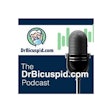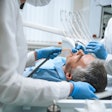Dentists at the University of Colorado (CU) Denver School of Dental Medicine mistakenly injected as many as eight patients with potentially lethal doses of midazolam after the drug was erroneously added to the school's stock in 2008, according to a story by the Denver Post.
School administrators decided not to notify any of the patients, but Denise Kassebaum, D.D.S., dean of the dental school, stressed that no patient was harmed. Dr. Kassebaum was not told about the mix-up, but in the wake of the incident, specific steps have been taken to require a more rigorous check of labels, spokeswoman Jacque Montgomery told DrBicuspid.com.
"The school's quality committee determined there was no negative patient outcome," Montgomery said. "Patients have to be awake and responsive before they're discharged or leave the dentist."
In August 2008, CU dental assistant Annette Wand picked up an order of 100 vials of midazolam from the campus pharmacy, and 50 of the vials contained 25 mg of the drug in 5 mL of liquid, Montgomery said. The higher-dosage midazolam was then put on the shelf in the dental school and available for use for about two weeks.
The situation was describer in a September 2008 "occurrence report" written by Wand that was obtained by the Post. Wand voluntarily disclosed the incident in 2003 when she sought a promotion and still works at the school.
According to the school's drug log, 21 vials of midazolam were administered to patients from August 28, 2008, to September 10, 2008. During this period, 17 patients were treated, but only as many as eight were possibly given the higher-strength drug, Montgomery said. Forty-two vials of the higher dosage were returned.
The logs showed that patients were injected with amounts of midazolam ranging from 1 mg to 8 mg.
That means it's possible patients who received the wrong dosage actually got as little as 5 mg of the drug or as much as 40 mg, according to the story. But there is no evidence that inappropriate doses were given to any patients, Montgomery noted.
CU treats about 40,000 patients a year, many of them uninsured and indigent. One of nearly 60 dental schools in the U.S., CU consistently ranks in the top tier on examinations and the top third of research dental schools, Montgomery said.
This latest revelation follows disclosures by the school earlier this year that a dentist without an active license was practicing at CU and that dental residents were using the credentials of some faculty members to obtain sedation drugs and write prescriptions -- even when those professors were not present for the procedures.
Copyright © 2010 DrBicuspid.com



















